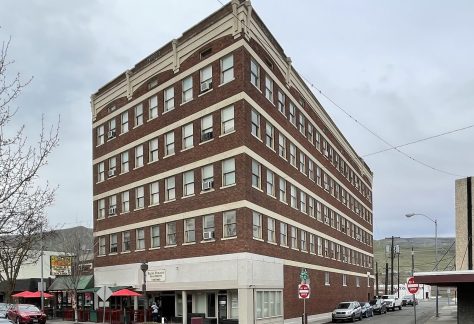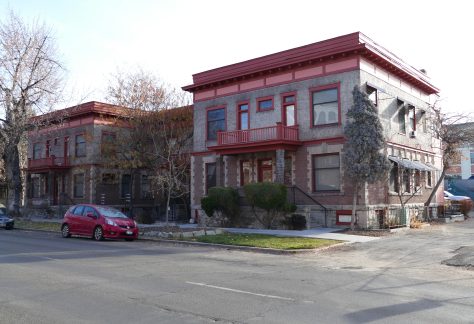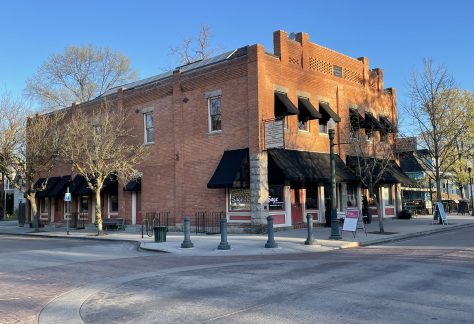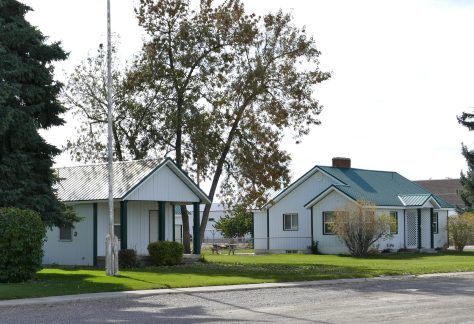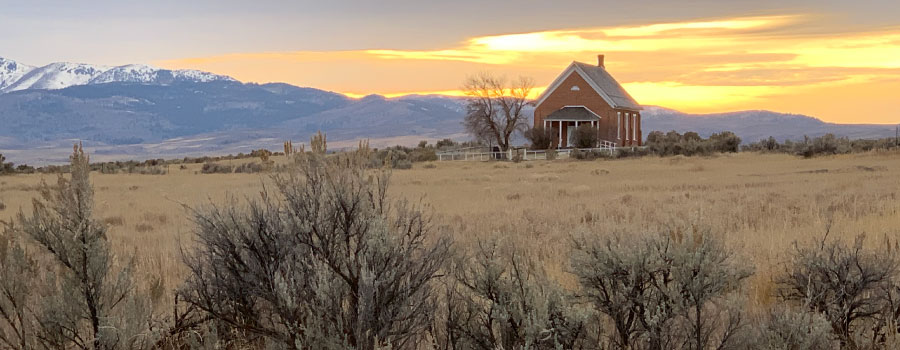
About the Program
Since the late 1970s, the Idaho State Historic Preservation Office, a division of the Idaho State Historical Society (ISHS) has administered a Historic Preservation Easement Program and protected historic properties throughout Idaho. ISHS currently manages 13 properties in its easement portfolio which protects 20 individual buildings.
Donating an easement is one of the most effective ways to preserve and protect a historic property in perpetuity. Listing in the National Register of Historic Places is strictly honorific and does not ensure the preservation of a historic place. In some Idaho cities, local preservation ordinances provide some measure of protection for historic properties but may only delay the alteration or demolition process. A preservation easement, on the other hand, is a legally binding agreement to protect a historic property from neglect, demolition, and insensitive alterations that may harm the property’s historic character.
Through the easement program, a property owner can guarantee the perpetual protection of an important historic resource without giving up ownership, use, or enjoyment of the property. Upon donation, the property owner and the ISHS enter into an agreement of shared stewardship, whereby the property owner agrees to comply with the terms of the easement and the ISHS agrees to not only assure compliance with the terms of the easement but also provide resources to ensure that the property remains a viable place to live, work, and benefit from.
Frequently Asked Questions
A historic preservation easement is a legal document through which a property owner retains title and use of a property, and, at the same time, ensures its long-term preservation by donating the right to alter the property without prior permission from the easement-holding organization. Future owners are also restricted from changing the property without prior approval throughout the life of the easement.
Easements typically last in perpetuity, but some may expire after a given timeframe. For the duration of the easement, property owners agree to maintain the property in accordance with the Secretary of the Interior’s Standards for the Treatment of Historic Properties to ensure that a building’s integrity, value, and historic context are preserved.
Because each property is unique, preservation easements are individually written and tailored to each property, defining the precise elements that are to be preserved. Most of the preservation easements held by the Idaho State Historical Society are easements which pertain to the exterior envelope of a building, landscape, and setting. The interior of the building is not usually included in the scope of the easement; however, it can include elements such as the floorplan of the structure or specific interior spaces and features if appropriate.
The easement also typically prohibits major alterations to the surrounding grounds that would mar the setting of the building, such as utility towers or signs. Historic preservation easements may also be applied to land. For example, the owner of a farm who does not wish their land to be developed can grant an easement restricting future development of the property.
People grant easements for a variety of reasons, from personal gain through tax benefits to community improvement through the permanent preservation of a significant structure. Some reasons for giving a preservation easement may include:
- Protection of a donor’s personal interest in preserving their home and protecting their family’s legacy.
- Preservation of a building which an owner has spent considerable time and resources restoring.
- Extension of the public’s appreciation of a specific place and its history.
- Prevention of demolition or development.
- Long-term professional assistance with technical preservation issues and stewardship by an organization with preservation knowledge and expertise.
- Condition for receiving preservation grants or public funding.
- Potential provision of federal charitable income tax deduction.*
- Potential reduction in estate, gift and capital gain taxes.*
- Section 106 mitigation strategy.
*Tax benefits to qualified owners are calculated based on decreased valuation due to easement restrictions placed on the property, as determined by a qualified appraisal. The Idaho State Historical Society provides this information for the purpose of general knowledge only. It does not constitute tax or legal advice. Property owners are encouraged to consult their own legal and accounting professionals when considering the implications of granting a preservation easement. According to IRS Code 170 (h), to receive a tax deduction, properties must be a “certified historic structure,” meaning it is either listed in the National Register of Historic Places or is located in a registered historic district and certified by the Secretary of the Interior as being of historic significance to the district.
Properties which are eligible for the program are either listed in the National Register of Historic Places, a contributing property within a National Register Historic District, a National Historic Landmark, a Local Landmark, or have been determined to be eligible for any of the above by the State Historic Preservation Office.
Any public, private, or nonprofit owner of a historic property may donate an easement. The ISHS also acquires easements resulting from grant projects funded by the National Park Service, Certified Local Government (CLG) grant agreements, or Section 106 mitigation.
Most easements are given in perpetuity, but some may expire after a given timeframe, particularly those acquired due to grants or CLG agreements. According to the IRS, an easement must be granted in perpetuity to be eligible for tax deductions.
Owners of an easement property agree to relinquish partial development rights, maintain the property, obtain prior approval from the easement holder for alterations or additions, and permit the easement holder to make annual inspections.
The easement holder (Idaho State Historical Society) documents and communicates recommendations resulting from inspections and ensures compliance with the terms of the easement. The ISHS works with property owners not only to preserve a property’s historical character, but also to find solutions for making the site economically viable, code-compliant, and a desirable place to live, work, or visit.
The Idaho State Historical Society, as a qualified easement holding organization, upholds the following principles:
- Established policies and donation criteria
- Dedicated professional staff and resources
- Model deed of easement and methodology for baseline documentation
- Formal monitoring plan, site visits, and open communication with owners
- Well-maintained easement records
- A fund for stewardship and legal defense
- Capacity to enforce easement restrictions, through legal means when necessary
The first step is to contact Dan Everhart, Easement Program Manager at the Idaho State Historic Preservation Office, about the program and then submit an application with documentation supporting the property’s historic significance. Once that application is submitted, Easement Program staff inspects the property to determine its eligibility for the program. The ISHS’s Easement Program Committee then reviews the application and sends their recommendation to ISHS’s Board of Trustees, who will make the final determination whether to accept the easement.
If the easement is accepted, the ISHS’s attorney drafts an easement document for review by the owner. This document includes the legal description of the property, drawings of the site plan and/or floor plan if interior features are included, identifies the elements of the property that the easement covers, specifies requirements for restoration and maintenance of the property, and documents the property’s existing condition through photographs. The owner and Easement Program Manager review the draft and make any changes that are mutually agreed upon.
For more information, read Donating an Easement Guidelines.
The ISHS recognizes that the acquisition and stewardship of perpetual easements requires a substantial commitment of resources. In order to have the capacity to accept new easements while sustaining its commitment to the protection of unique historic resources already under easement, the ISHS charges an application fee, a preparation fee, and a stewardship contribution, which is based on a percentage of the appraised value of the property immediately prior to the easement donation.
For more information, read Section D: Fees and Funds of the Easement Program Policies.
An easement property owner is required to properly steward and maintain the historic resource according to national best practices. A property owner must also provide the Easement Program staff with access to the property during annual monitoring. The Idaho State Historical Society conducts annual monitoring of its easement properties to ensure the easement requirements are being upheld and proper maintenance of the building is occurring.
For more information, read Monitoring Guidelines.
Property owners must contact the Easement Program Manager prior to making any alterations outside ordinary maintenance of the elements protected by the easement. This can include changes to or replacements of windows, doors, siding material, architectural details, and/or landscape features.
For more information on what types of projects require prior approval, please review Guidance for Determining When Prior Approval is Needed.
If you have a project that requires prior approval, please follow the steps laid out in Alteration Request Guidelines.
The Easement Program Committee, comprised of State Historic Preservation Office staff, reviews any proposed alterations to a historic preservation easement property. The Committee consists of members with expertise in historic architecture, historic preservation, preservation law, and historic design review. All proposed alterations are reviewed according to the Secretary of the Interior’s Standards for Treatment of Historic Properties.
Once a proposed alteration has been submitted by the property owner, ISHS will respond to the proposed alteration request with its approval, approval with conditions, or denial. If denied, the ISHS will work with the property owner to find a reasonable solution while retaining the historic integrity of the property.
The long-term success of the Easement Program depends on strong working relationships with property owners through on-going communication, outreach, and education. The ISHS is eager to collaborate with individual property owners to identify solutions that ensure the protection and preservation of a property’s historic character. When requested, Easement Program staff will provide technical assistance and preservation information to property owners.
However, to have a successful easement program, the ISHS has the resources and willingness to enforce the easements it holds should violations occur. It considers a strong enforcement policy vital to maintain the integrity of the program. It is the responsibility of the ISHS’ Easement Program to ensure the preservation of the properties it has promised to protect and acknowledges the great trust that has been placed on the organization by easement donors.
If the property owner does not address issues, such as deferred maintenance and violations, despite being provided with extensive resources and opportunities, the ISHS has the legal obligation to defend the easement through a property lien or other legal action.
For more information about how the ISHS addresses violations, please read the Violations Guidelines.



